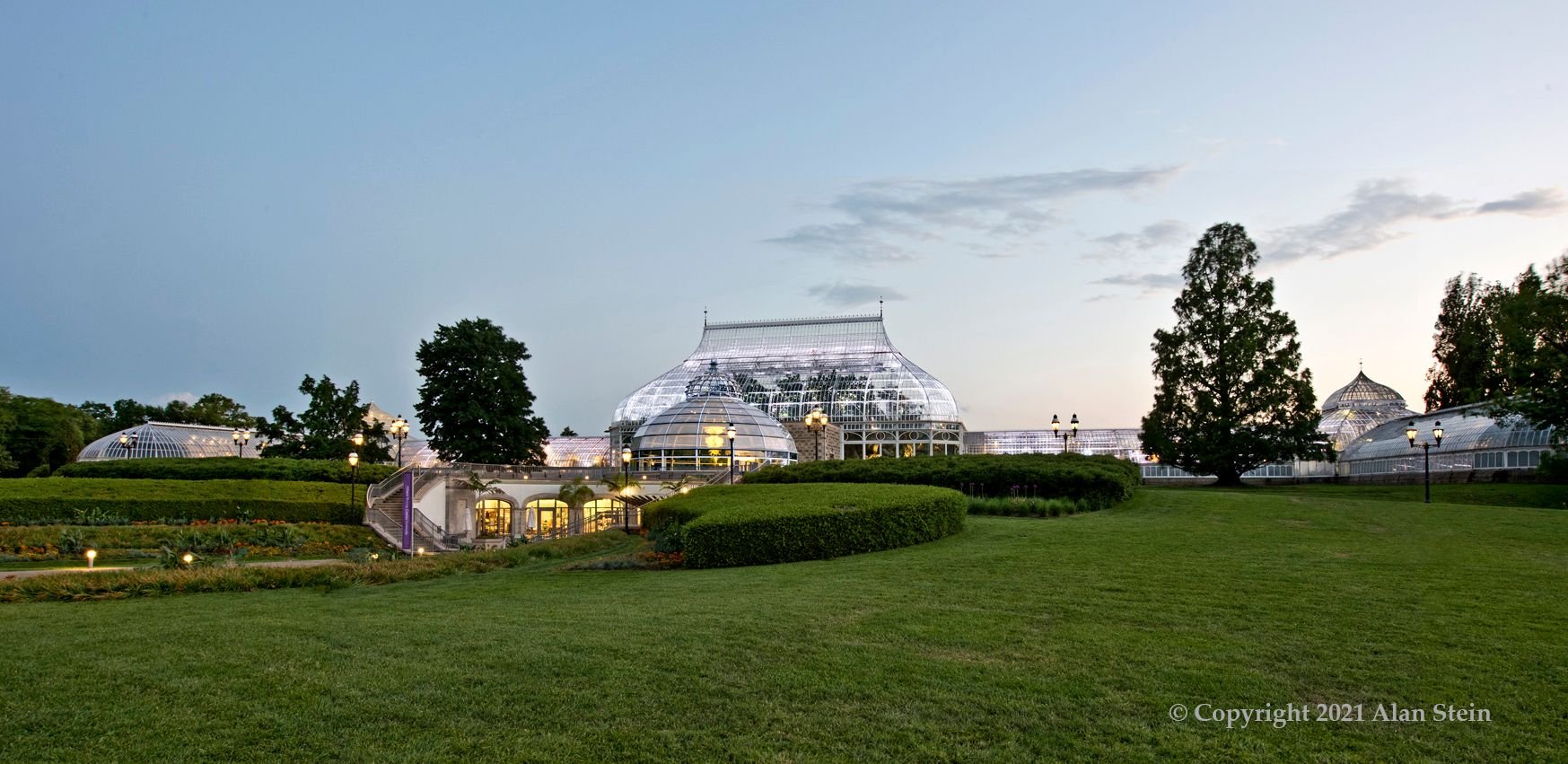
Phipps Conservatory
Pittsburgh, Pennsylvania, 1893
Architect: Lord & Burnham
Phipps conservatory, set in "one of America's greenest public gardens," is located in Pittsburgh, Pennsylvania in the Oakland neighborhood. Developed in 1893, this steel and glass Victorian conservatory is found in one of the city's biggest green spaces. This greenhouse, originally housing tropical plants from the 1893 Chicago Columbian Exposition (now known as the World's Fair), was a gift to the city of Pittsburgh by Henry Phipps, Jr. After emigrating as a child from England to Philadelphia, this son of a cobbler became a very wealthy man after becoming Andrew Carnegie's business partner in the Carnegie Steel Company. He was the company's second largest shareholder before selling his stock and deciding to devote himself to more philanthropic efforts, the first of which would be the Phipps Conservatory.
The Conservatory was designed by the famous Lord & Burnham firm in New York and cost $100,000. Phipps stated that he wanted to "erect something that will prove a source of instructions as well as pleasure to the people." He also insisted on the building being open on Sundays so that the workers who worked on Saturdays could visit with their families on their days off. Admission was free until 1940.
The current Conservatory consists of thirteen rooms on 2.5 acres of land, with gardens, ponds, and fountains, surrounding the outside of one of this country's largest Victorian "crystal palaces." The entrance pavilion of the Phipps Conservatory currently boasts a LEED silver-level certification. LEED (Leadership in Energy and Environmental Design) is a rating system started in 1998 for the "design, construction, and operation of high performance green buildings."
The Phipps Conservatory originally consisted of nine rooms and the plants were usually displayed in pots on top of benches. This changed in 1935 when the head of the Phipps Conservatory's horticulture department, Ralph Griswold, decided to start placing the plants in a more natural garden setting, a design that still exists today. Phipps is one of the largest conservatories in the world. The Palm Court is at its center and rises to an impressive 65 feet tall. Phipps added, during the years 1896 - 1897, a South Conservatory, which was later sub-divided in the latter part of the 1930s and now houses the Gallery and Tropical Fruit & Spice Room. In 1902, Phipps funded the Cacti House; desert plants thrive here under the glass and Pittsburgh sunshine.
From February 1937 to September 1938, the Conservatory had to close and undergo major repairs because of a windstorm that shattered the glass panes in the glasshouses. The arch in the Palm Court also had to be removed because of the damage sustained in the storm. The Conservatory was able to reopen in time to host the Fall Flower Show of 1938.
On September 24, 2009, the Phipps Conservatory hosted the official welcome dinner for the Pittsburgh G-20 summit. President Obama, First Lady Michelle Obama, and many local and foreign dignitaries attended this summit and vowed to work together to continue toward the common goal of economic cooperation. As the President said in a meeting from the Oval Office days prior to the summit, "This is a recognition that Pittsburgh is a world-class city. That it represents the transition of the U.S. economy from [an] industrial state to a mix of strong industry - steel - but also now biotech and clean energy. It has transformed itself, after some very tough times, into a city that's competing in the world economy."
In April of 2012, the Mid-Atlantic Association of Museums awarded its 4th annual "Buildy" award to the Phipps Tropical Forest Conservatory "for its radical innovations design." The Phipps design team impressed the Buildy Award jury by starting "from scratch to reconsider how a conservatory or greenhouse uses 21st Century technologies" to reduce "winter heating costs by half and completely [eliminating] summer cooling costs."
Plants are always blooming at the Phipps Conservatory. Visiting one of the finest and largest Victorian greenhouses in the United States is necessary while in Pittsburgh. Tropical plants, orchids, palms, desert plants and ferns, as well as butterflies, can be seen throughout the year.



